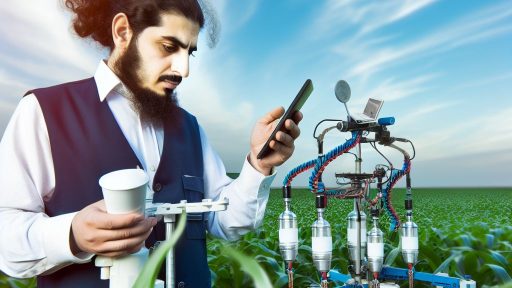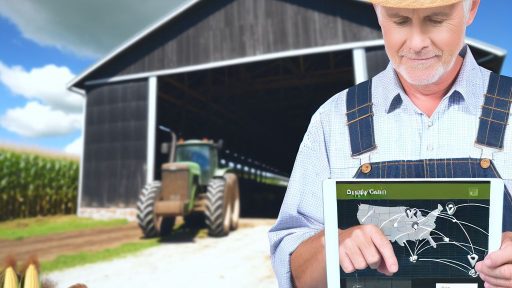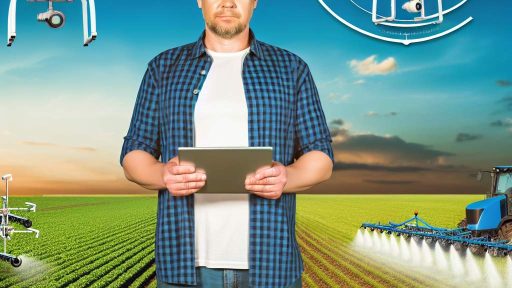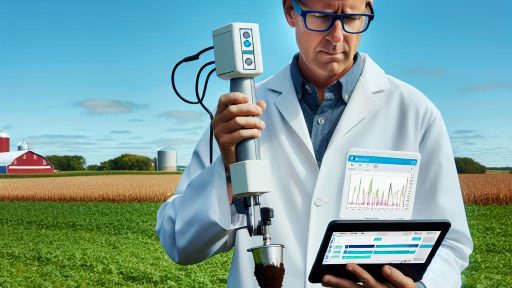Introduction to Drone Technology in Agriculture
Drone technology revolutionizes modern agriculture.
This innovation enhances productivity and efficiency on farms.
Farmers employ drones for various tasks, optimizing their operations.
Current Applications of Drones
Drones assist in crop monitoring with real-time aerial imagery.
This technology allows farmers to assess plant health quickly.
Additionally, drones support precision agriculture, minimizing resource waste.
Benefits of Utilizing Drones
Improved data collection leads to better decision-making.
Farmers can reduce pesticide use, promoting environmental benefits.
Moreover, drones save time on field surveys compared to traditional methods.
Challenges and Considerations
Implementing drone technology requires initial investment and training.
Farmers must navigate regulatory requirements for drone usage.
Furthermore, reliable internet connectivity is crucial for effective operation.
Future Trends in Agriculture Drones
The future holds advancements in drone capabilities and functions.
Integrating artificial intelligence will enhance data analysis for farmers.
Moreover, we can expect increased accessibility for small-scale farmers.
Transform Your Agribusiness
Unlock your farm's potential with expert advice tailored to your needs. Get actionable steps that drive real results.
Get StartedBenefits of Drones for Precision Farming
Enhanced Crop Monitoring
Drones provide real-time aerial views of fields.
This technology allows farmers to spot issues quickly.
Consequently, they can address problems before they escalate.
Drones can identify variations in crop health efficiently.
This data helps in making informed decisions about interventions.
Improved Resource Management
Drones enable precise application of inputs, such as fertilizers.
Farmers can target specific areas, reducing waste significantly.
This targeted approach saves costs and enhances productivity.
Furthermore, it minimizes environmental impacts.
Accurate resource management leads to sustainable farming practices.
Increased Yield Potential
By monitoring crop growth closely, yields can increase considerably.
Drones help in assessing the effectiveness of farming practices.
Using this data, farmers can refine their approaches over time.
Ultimately, maximizing the yield leads to enhanced profitability.
With improved practices, farmers can meet growing food demands.
Time Efficiency and Labor Savings
Drones reduce the time required for field inspections.
This efficiency allows farmers to focus on other critical tasks.
Moreover, fewer labor hours translate into cost savings.
Farmers can streamline operations and enhance overall productivity.
Additionally, drone usage can improve farm management efficiency.
Data-Driven Decision Making
Drone technology facilitates data collection on a large scale.
This vast amount of data supports better decision making.
Farmers can analyze trends and make predictions based on evidence.
Consequently, they can adopt proactive strategies for crop management.
Showcase Your Farming Business
Publish your professional farming services profile on our blog for a one-time fee of $200 and reach a dedicated audience of farmers and agribusiness owners.
Publish Your ProfileData analysis leads to continuous improvement in farming practices.
Types of Drones Used in Agriculture
Multirotor Drones
Multirotor drones are widely used in farming applications.
They offer excellent maneuverability in small spaces.
Farmers utilize them for crop monitoring and irrigation assessment.
Furthermore, they capture high-resolution aerial images.
Fixed-Wing Drones
Fixed-wing drones cover larger areas efficiently.
They excel in surveying vast agricultural fields.
Farmers often employ them for mapping and analysis.
Additionally, they can fly long distances on a single charge.
Hybrid Drones
Hybrid drones combine the features of multirotor and fixed-wing models.
This versatility enables them to take off and land vertically.
They also have extended flight durations compared to multirotors.
Consequently, farmers appreciate their multifunctional capabilities.
Payload Drones
Payload drones transport various tools and equipment to fields.
They can deliver seeds, fertilizers, or pesticides directly to crops.
Farmers streamline their operations using these drones.
Moreover, payload drones reduce labor costs significantly.
Surveying Drones
Surveying drones collect data for crop health assessments.
Farmers use them to monitor vegetation indices and soil conditions.
They support precision agriculture through detailed analysis.
Overall, they enhance decision-making by providing actionable insights.
Learn More: Choosing The Right Agricultural Drone For Your Farm
Regulatory Considerations for Drone Use in Farming
Understanding the Regulatory Framework
Farmers must familiarize themselves with drone regulations.
The Federal Aviation Administration (FAA) governs drone use in the United States.
Compliance with these regulations ensures safe operations.
Registration is a requirement for drones weighing over 0.55 pounds.
Moreover, operators must obtain a Remote Pilot Certificate.
Local Regulations and Zoning Laws
Beyond federal regulations, local laws may restrict drone use.
Farmers should check zoning laws pertinent to their regions.
Permits might be necessary for certain agricultural operations.
Consulting with local authorities helps clarify these requirements.
Understanding these laws prevents potential legal issues.
Privacy Concerns and Community Impact
Drone usage can raise privacy concerns among neighbors.
Farmers must consider the implications of aerial surveillance.
Engaging with the community builds trust and understanding.
Open communication about drone usage can alleviate concerns.
Future of Drone Regulations
Regulations around drones are continuously evolving.
Technological advancements may prompt new rules and guidelines.
Staying informed about changes ensures compliance.
Attending workshops and conferences can enhance knowledge.
Showcase Your Farming Business
Publish your professional farming services profile on our blog for a one-time fee of $200 and reach a dedicated audience of farmers and agribusiness owners.
Publish Your ProfileMoreover, connecting with industry groups helps in sharing insights.
Find Out More: Training Your Team To Use Farm Management Software Effectively
Best Practices for Implementing Drone Technology on Farms
Choosing the Right Drone
Start by assessing your specific farming needs.
Consider the type of crops you grow and their unique requirements.
Evaluate different drone models that align with your goals.
Seek advice from agricultural technology experts in your region.
Also, read reviews and case studies to inform your decision.
Understanding Regulations
Familiarize yourself with local regulations regarding drone use.
Check for the necessary permits required to operate legally.
Stay updated on any changes in aviation laws affecting agriculture.
Attend workshops or seminars on drone compliance and safety.
Training and Skill Development
Invest in training programs for you and your staff.
Focus on both flying skills and data analysis capabilities.
Consider hands-on training for practical experience.
Encourage teamwork to foster a collaborative learning environment.
Data Collection and Analysis
Set clear objectives for what data you want to gather.
Use drones to collect aerial imagery and soil health information.
Implement software solutions for real-time data analysis.
Utilize data to make informed crop management decisions.
Maintenance and Upkeep
Regularly inspect drones to ensure they are in top condition.
Follow the manufacturer’s guidelines for maintenance protocols.
Document all maintenance activities for accountability.
Address any issues promptly to prevent costly downtime.
Integration with Other Technologies
Explore ways to integrate drones with existing farm management systems.
Consider pairing drones with sensor technology for enhanced data collection.
Utilize mapping software to visualize drone data effectively.
Ensure compatibility between different technological platforms.
Continuous Learning and Adaptation
Stay informed about advancements in drone technology.
Join online forums or local groups focused on agricultural innovation.
Encourage feedback from employees about drone usage and effectiveness.
Adapt your practices based on learnings from ongoing experiences.
Explore Further: Leveraging Drone Data For Smarter Farming Decisions
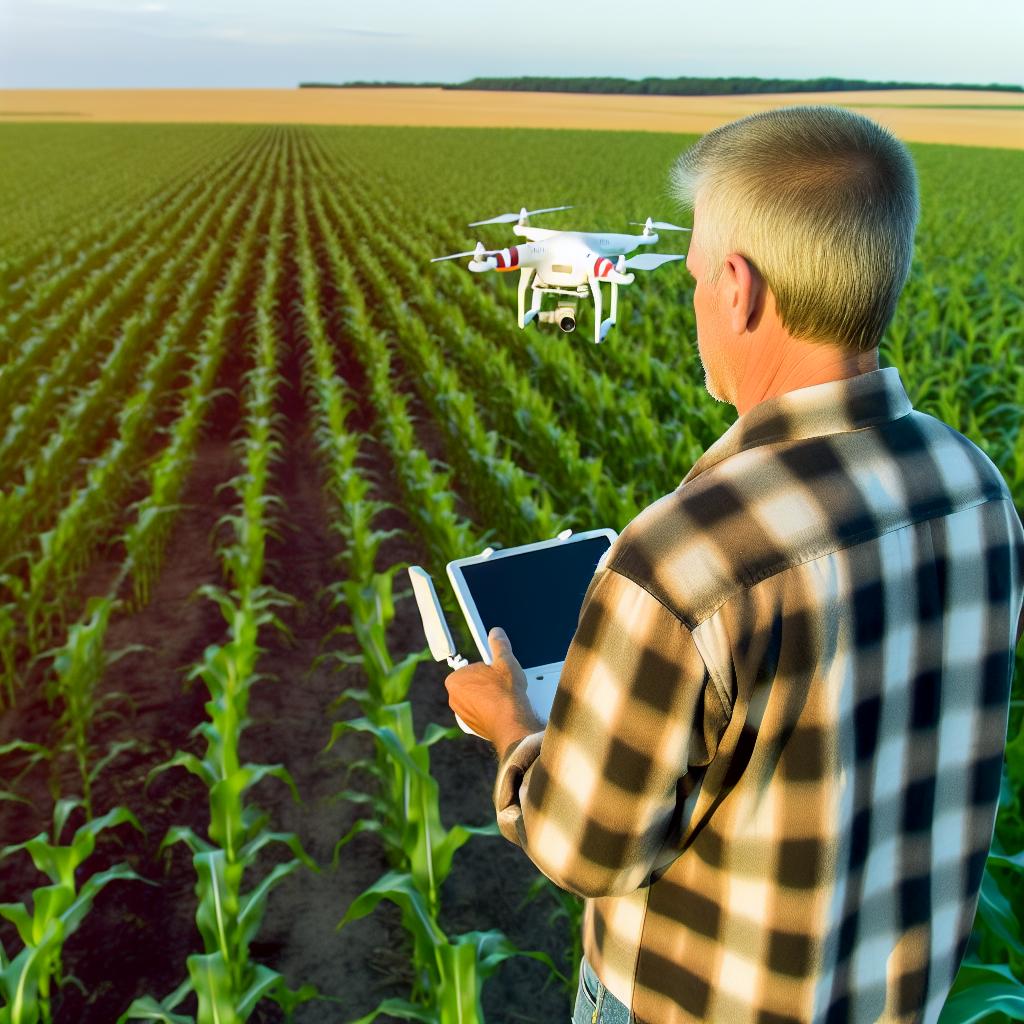
Case Studies: Successful Drone Implementations
Agricultural Monitoring at Green Valley Farms
Green Valley Farms integrated drones for crop monitoring in 2021.
The farm uses high-resolution cameras to capture aerial images.
This technology allows farmers to assess crop health efficiently.
The data collected identifies irrigation needs accurately.
Consequently, this implementation leads to a 25% reduction in water usage.
Pest and Disease Management at Sunny Fields Co.
Sunny Fields Co. adopted drones to monitor pests in 2022.
Drones equipped with thermal imaging identify heat signatures of pest infestations.
Farmers act quickly, applying targeted treatments to affected areas.
Showcase Your Farming Business
Publish your professional farming services profile on our blog for a one-time fee of $200 and reach a dedicated audience of farmers and agribusiness owners.
Publish Your ProfileThis approach significantly decreases pesticide usage and costs.
As a result, the farm enjoys healthier crops and higher yields.
Precision Agriculture at Harvest Innovations
Harvest Innovations utilizes drones for precision agriculture.
They create detailed maps highlighting soil variability across fields.
This information helps farmers optimize their planting strategies.
Moreover, data-driven decisions enhance overall crop performance.
The farm reports increased profitability due to improved practices.
Irrigation Management at Riverbend Farms
Riverbend Farms implemented drones for irrigation management.
Drones capture real-time data on soil moisture levels.
This data enables precise irrigation scheduling, improving efficiency.
Consequently, water conservation efforts are maximized.
Farmers can now maintain optimal soil conditions throughout the growing season.
Delve into the Subject: Biodegradable Packaging Solutions Supporting Sustainable Agriculture
Challenges and Limitations of Drone Technology in Agriculture
High Initial Costs
Investing in drone technology involves significant initial expenses.
Farmers often need to purchase hardware and software together.
Additionally, licensing and operational training further add to costs.
Such high investments may deter small-scale farmers.
Regulatory Hurdles
Drone operations in agriculture face various regulatory challenges.
Different regions impose specific rules regarding airspace usage.
Farmers must navigate these regulations while planning their operations.
Compliance adds complexity to drone deployment strategies.
Technical Limitations
Drones have inherent technical limitations that affect their use.
For instance, battery life can restrict flight duration.
Adverse weather conditions can hinder operational efficiency.
Moreover, GPS signal issues may disrupt positioning accuracy.
Data Management Challenges
Drones generate vast amounts of data that require analysis.
Farmers often lack the skills to interpret this data effectively.
Furthermore, managing and storing this data can be cumbersome.
Inadequate data management can lead to missed insights.
Limited Range and Coverage
The range and coverage of drones can limit their effectiveness.
Most models are suitable for small to medium-sized farms.
As a result, expansive agricultural operations face challenges.
Farmers might need multiple drones to ensure comprehensive coverage.
Privacy Concerns
Drones can raise privacy concerns among neighboring farms and communities.
Unwanted surveillance can lead to tensions and mistrust.
Farmers must consider these aspects to maintain good relations.
Addressing privacy issues is crucial for widespread drone acceptance.
Future Trends in Drone Technology for Farming
Advanced Data Analytics
Farmers are increasingly utilizing drones for precise data collection.
This shift enhances decision-making in crop management.
Analytics platforms process real-time data from drone flights.
Showcase Your Farming Business
Publish your professional farming services profile on our blog for a one-time fee of $200 and reach a dedicated audience of farmers and agribusiness owners.
Publish Your ProfileFarmers benefit from insights regarding plant health and soil conditions.
Enhanced Crop Monitoring
Drones equipped with multispectral cameras improve crop monitoring.
They capture valuable images to assess plant health efficiently.
This technology enables early detection of diseases and pests.
Farmers can thus take action before issues escalate.
Automated Field Management
Automation is revolutionizing farming practices with drone technology.
Drones can perform tasks like seeding and spraying with precision.
This reduces labor costs and increases productivity.
Moreover, it ensures uniform application across the field.
Regulatory Advancement
As drone technology evolves, regulations are also adapting.
Governments are streamlining drone usage in agriculture.
Farmers are gaining more freedom to utilize aerial solutions.
New regulations facilitate safer and more efficient operations.
Integration with Other Technologies
Drones are becoming part of larger technological ecosystems on farms.
Integration with IoT devices is increasingly common.
This collaboration provides comprehensive insights for farmers.
Consequently, farmers can optimize their resources better.
Growth of Agricultural Startups
Innovative agricultural startups are emerging focused on drone technology.
These companies provide specialized solutions for farmers.
Partnerships with established agricultural businesses drive growth.
Ultimately, farmers gain access to cutting-edge tools and services.
Additional Resources
Drone Ban Controversy: How US Farmers Are Fighting for Precision …
Precision Agriculture: Benefits and Challenges for Technology …

